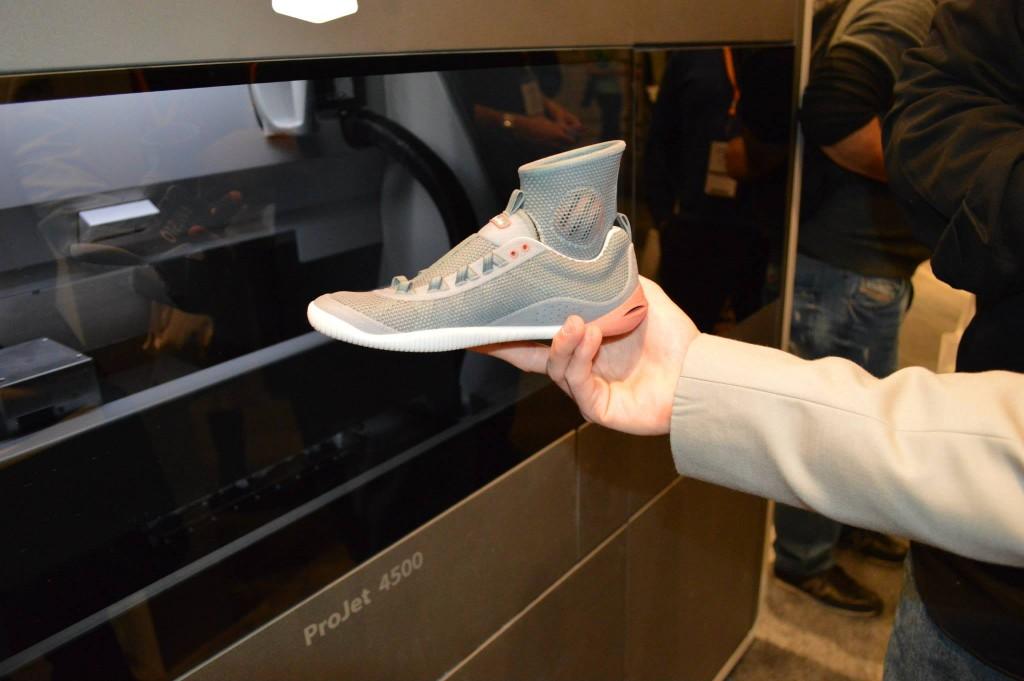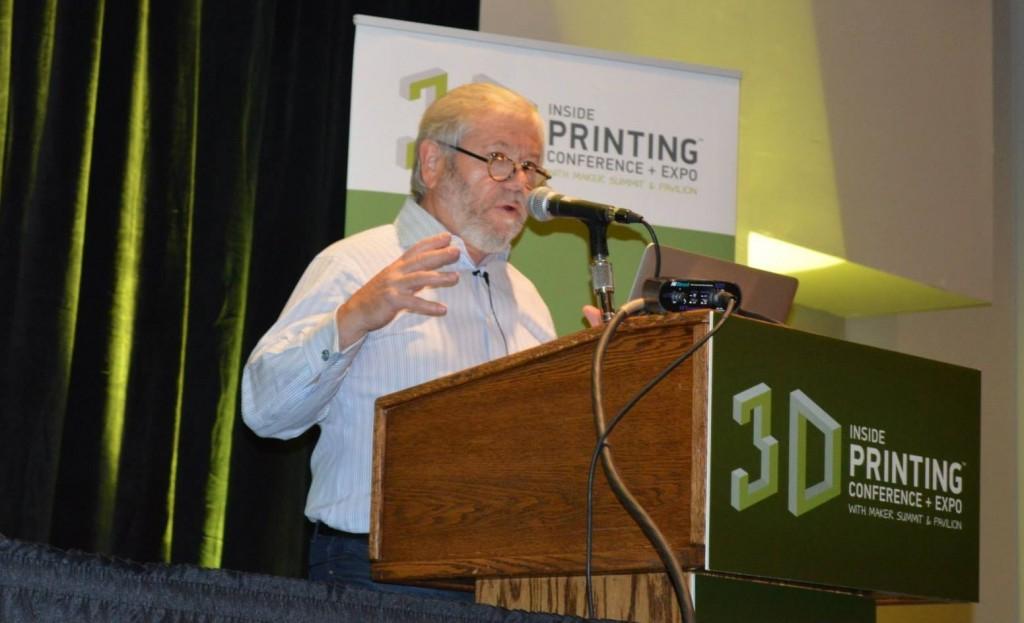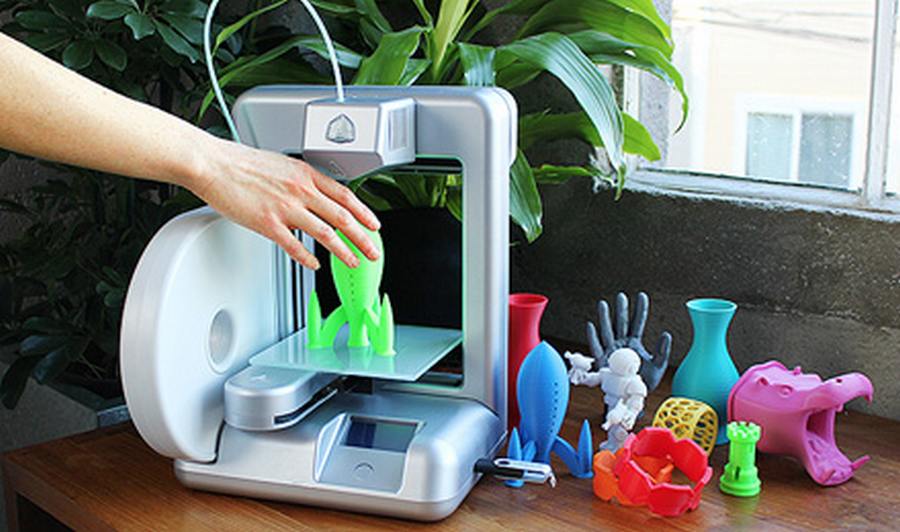Question Isn’t IF 3D Printing Will be in All Homes, It’s “What room in your house will your 3D printer reside?” – 3D Systems’ CEO
One of the top speakers at the Inside 3D Printing Conference & Expo in New York City this past week was 3D Systems’ CEO and President, Avi Reichental. He has been at the helm of the largest 3D printing company in the world since 2003, and has helped the industry grow tremendously in that time.
A question that is continuously discussed, and debated among those in the industry, is “Will 3D printing ever fully be integrated into homes”. Most of us know that the technology is beginning to become used extensively in prototyping and manufacturing in factories, and larger companies around the globe. However, so far only a very small percentage of homes are utilizing 3D printers. Right now the in-home 3D printers are very basic. They are smaller machines that print in plastics or nylon. When it comes to practical uses for these printer on an everyday basis, they are very limited in scope. This along with a typical price tag of between $500 – $6500, 3D printers just have not yet become a feasible addition in most homes.
However, 3D printers are extensively being used in industry, on a continuous basis. More and more small and large companies have been outsourcing their designs to firms that have access to more expensive and advanced 3D printing technology, for prototyping, and customization of products. Some larger companies have their own 3D printers on hand, ranging in price from $10,000 up to $1 million.
During the Inside 3D Printing Conference, Avi Reichental discussed the topic of in-home 3D printers.
“There are a lot of people that ask me every week, if I believe that 3D printing will end up in our houses, and I think it is the wrong question to ask,” said Reichental. “I think that the right question to ask is, ‘What room in your house will your 3D printer reside?’. How do you use it? In your kitchen or in your garage?”
When most people think about 3D printers being in homes, they think about the smaller sized printers that you are used to seeing today. However, when it comes down to 3D printing automobile parts, home improvement items, and larger bulky items that you find around your home, the smaller printers may just not be the answer.
Is it possible that in the near future we will see several 3D printers in the typical home? Perhaps the average Joe will have a smaller printer in his office, to print things such as toys and smaller replacement parts. But in addition to this, it isn’t out of the realm of possibility that the same person may also have another 3D printer in his garage to print larger items such as a new bumper cover for his car, or a piece of his rain gutter that has worn out. Then if you make your way to his kitchen, perhaps you will find another 3D printer that is ready to print tonight’s dinner. There are already several food printers out there, and these are just now starting to gain traction.
It really isn’t too easy to predict what the future will hold.
“We aren’t good at predicting the future because we believe that if you are to predict the future, you make [the future],” said Reichental. “We are making the future by creating the systems in all the capability ranges and price points, to be able to bring about a new kind of future.”
A new kind of future that may just include multiple 3D printers in your home, serving multiple purposes. Currently 3D Systems’ top-of-the-line printers are the ProJet® series. These printers cost up to $1 million and are more often than not outsourced to for protyping, and customization of products by larger companies. They can print in a multitude of materials and colors, using Stereolithography (SLA), a process in which a laser cures a photopolymer “resin”, to create large objects.

A shoe printed by one of 3D System’s ProJet printers – These printers retail around $250,00-$500,000
With time however, the price of these printers will decrease, and become more feasible for the typical person to purchase for in-home use. Advancement in technology will allow these printers to be built much cheaper, and on a more massive scale. I asked Reichental when he thinks 3D printers like the ProJet® series will be in homes. I was expecting an answer such as, “In the next 15-20 years”, but to my surprise, he specifically said, “In 2 or 3 years.”
Whether or not this will be the case, is yet to be seen. 2-3 years is not very long for technology to advance very far, nor drop in price significantly. We can only wait and see if Reichental is correct in his predictions; predictions that he himself said that they do not like making. Will 3D Systems make the future, or will the future turn out to be different than we all expect? Let us know what your opinions are by leaving your comment in the 3DPrintBoard discussion thread.
Subscribe to Our Email Newsletter
Stay up-to-date on all the latest news from the 3D printing industry and receive information and offers from third party vendors.
You May Also Like
Gorilla Sports GE’s First 3D Printed Titanium Cast
How do you help a gorilla with a broken arm? Sounds like the start of a bad joke a zookeeper might tell, but it’s an actual dilemma recently faced by...
Nylon 3D Printed Parts Made More Functional with Coatings & Colors
Parts 3D printed from polyamide (PA, Nylon) 12 using powder bed fusion (PBF) are a mainstay in the additive manufacturing (AM) industry. While post-finishing processes have improved the porosity of...
$25M to Back Sintavia’s Largest Expansion of Metal 3D Printing Capacity Since 2019
Sintavia, the digital manufacturing company specializing in mission-critical parts for strategic sectors, announced a $25 million investment to increase its production capacity, the largest expansion to its operations since 2019....
Velo3D Initiates Public Offering in a Bid to Strengthen Financial Foundations and Drive Future Growth
Velo3D (NYSE: VLD) has been among a number of publicly traded 3D printing firms that have attempted to weather the current macroeconomic climate. After posting a challenging financial report for 2023,...


































